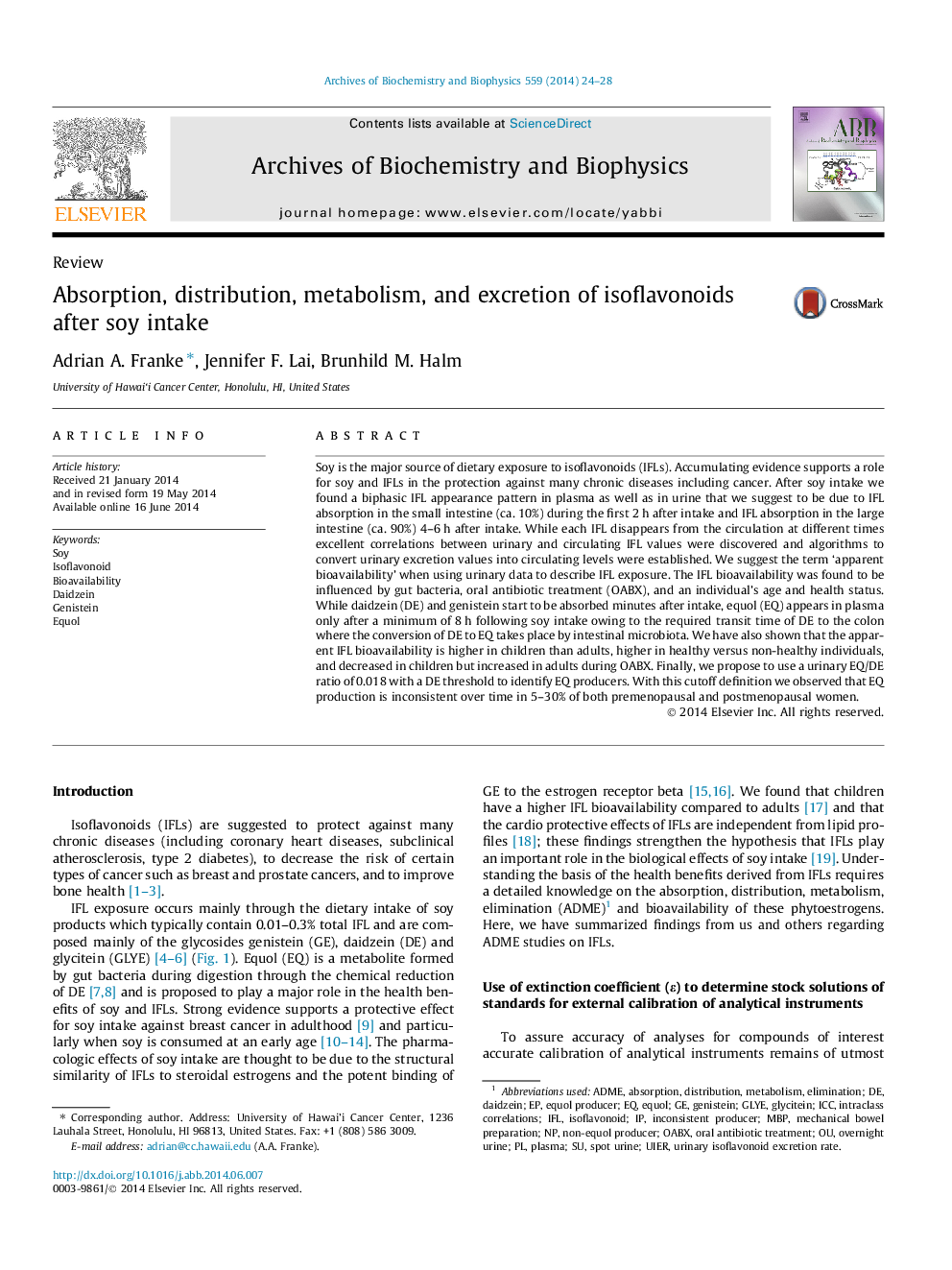| کد مقاله | کد نشریه | سال انتشار | مقاله انگلیسی | نسخه تمام متن |
|---|---|---|---|---|
| 1925126 | 1536343 | 2014 | 5 صفحه PDF | دانلود رایگان |
• IFLs appear in plasma and urine in a biphasic pattern 1–2 and 4–6 h post soy intake.
• Algorithms were developed to inter-convert urinary and circulating IFL values.
• Apparent IFL bioavailability is higher in children than adults.
• To identify EQ producers we suggest a urinary EQ:DE ratio with a DE threshold.
• EQ production is inconsistent over time in 10–30% of pre- and post-menopausal women.
Soy is the major source of dietary exposure to isoflavonoids (IFLs). Accumulating evidence supports a role for soy and IFLs in the protection against many chronic diseases including cancer. After soy intake we found a biphasic IFL appearance pattern in plasma as well as in urine that we suggest to be due to IFL absorption in the small intestine (ca. 10%) during the first 2 h after intake and IFL absorption in the large intestine (ca. 90%) 4–6 h after intake. While each IFL disappears from the circulation at different times excellent correlations between urinary and circulating IFL values were discovered and algorithms to convert urinary excretion values into circulating levels were established. We suggest the term ‘apparent bioavailability’ when using urinary data to describe IFL exposure. The IFL bioavailability was found to be influenced by gut bacteria, oral antibiotic treatment (OABX), and an individual’s age and health status. While daidzein (DE) and genistein start to be absorbed minutes after intake, equol (EQ) appears in plasma only after a minimum of 8 h following soy intake owing to the required transit time of DE to the colon where the conversion of DE to EQ takes place by intestinal microbiota. We have also shown that the apparent IFL bioavailability is higher in children than adults, higher in healthy versus non-healthy individuals, and decreased in children but increased in adults during OABX. Finally, we propose to use a urinary EQ/DE ratio of 0.018 with a DE threshold to identify EQ producers. With this cutoff definition we observed that EQ production is inconsistent over time in 5–30% of both premenopausal and postmenopausal women.
Journal: Archives of Biochemistry and Biophysics - Volume 559, 1 October 2014, Pages 24–28
